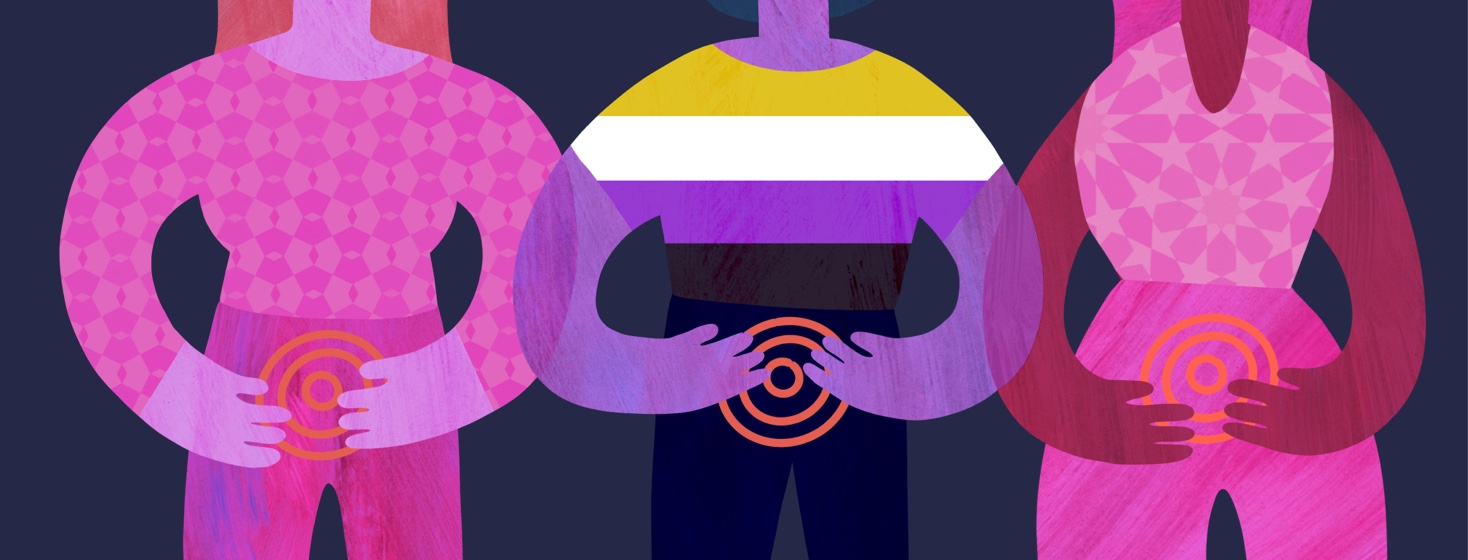Managing Endo While Trans Nonbinary
Navigating endometriosis can be challenging enough on its own. Add being trans nonbinary and the struggle can worsen.
Kai Preston, a 20-year-old trans nonbinary lesbian in New York, knows this all too well. They’ve known since age 12 that something was wrong regarding their menstrual cycle and they sought medical help when things escalated.
Laparoscopic surgery found endo
“I was diagnosed with anemia and in so much pain I was throwing up,” they said (Kai uses they/them pronouns).
After pushing their doctors to do laparoscopic surgery, Kai finally had the procedure two years ago. The surgeon found “endo everywhere.” Now Kai has lost 50% of their fertility and the disease has damaged most of their reproductive organs. They have to make hard decisions about their fertility, like possibly freezing their eggs and having a hysterectomy. But they don’t feel ready to make choices about having kids.
For the time being, Kai is on birth control to stop their periods. So far it is working well to control flare-ups. They will still need ultrasounds every three months to check the disease’s progress in addition to bi-monthly blood work.
Because Kai’s endometriosis has grown into their back and involved their sciatic nerve, they can no longer walk and they now use a wheelchair. Additionally, between chronic pain, endometriosis, and post orthostatic tachycardia syndrome symptoms, Kai is unable to work.
Misgendered and misunderstood by doctors
This would be more than enough hardship for one person, but Kai said they’ve also been repeatedly misgendered and misunderstood by doctors.
“My old clinic wasn’t very good at gendering me; they would still constantly call me she because I was there for endo.”
Even though they are at a new clinic now, they have to see many different medical professionals to manage their disease. Each one feels like a new hurdle.
“All you want to do is pass and ignore the dysphoria,” Kai said. “You have to out yourself as trans every time you seek medical care.”
Kai was diagnosed with gender dysphoria (feeling like your gender identity is different from the one assigned at birth) a few years ago. The diagnosis brought relief but also frustration that pursuing physical transition would be challenging.
“It felt good because now I know a bit more about the feelings I was having and what’s going on; before, I was so disconnected with my body and I didn’t know why I hated it so much. The diagnosis also sucked because I know how hard it will be to transition.”
Kai plans to physically transition with surgery and also microdose testosterone, but the timing is complicated for many reasons. For one, they need to decide when to do a hysterectomy, which has been recommended to manage the endometriosis.
Advice for trans and nonbinary with endo
When asked what advice Kai would give other trans and nonbinary people who have endometriosis, they encouraged people to keep fighting and advocating. And they also reminded people that having endo doesn’t have to be at odds with one’s gender identity.
“Having endo doesn’t make you less of who you are, no matter if you ID as a girl, a guy, or as nonbinary. It doesn’t change who you are.”

Join the conversation